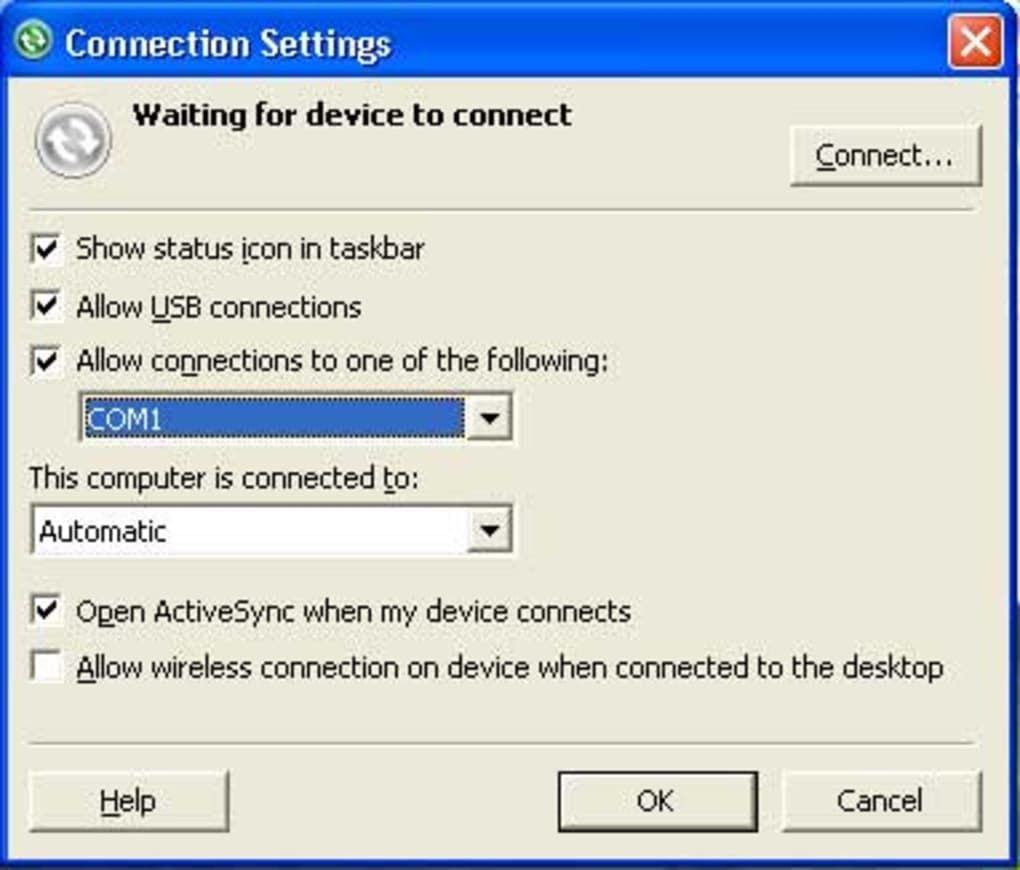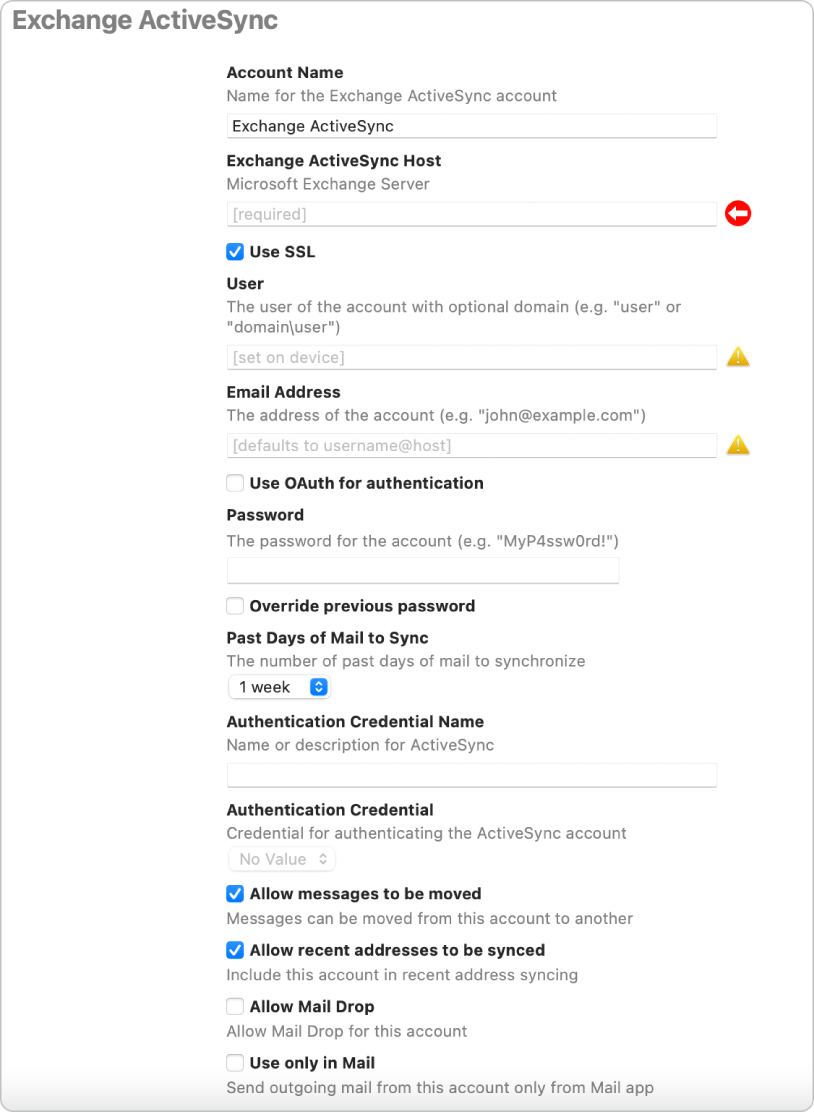This article describes how to collect Exchange ActiveSync device logs to troubleshoot sync issues between mobile devices and Exchange Online in Microsoft Office 365. If you can't sync your mobile device to your mailbox, you may be asked by Office 365 Support to collect logs for troubleshooting. Verify that Autodiscover is working for Microsoft Exchange ActiveSync. To do this, follow these steps: Browse to the Microsoft Remote Connectivity Analyzer site. Select Exchange ActiveSync Autodiscover from the Microsoft Exchange ActiveSync Connectivity Tests and select Next. Enter all the required fields and select Perform Test. If you successfully connected to the account before, try to connect to it from another Exchange application, such as Outlook on the web. You can also check the status of the Exchange server by contacting your Exchange server administrator. Cause: Items from an Exchange.
In this blogpost, we compare POP3 vs IMAP vs Exchange ActiveSync. We will see how these protocols work. What are their pros and cons? We will conclude by giving tips on how to use them with your Mailfence account.
Post Office Protocol (POP3)
The Mail server receives all the emails sent and stores them accordingly into your mailbox.
POP3 offers a simple way for downloading your emails from the Inbox of a remote mailbox to your local mailbox (POP3 downloads only the content of your Inbox, not the content of any other folder).
The POP3 client software connects to an email server and fetches all the new messages (the ones that were not downloaded before) present in the Inbox. Then, depending on the user specifications, the original mails are deleted from the server or not, so emails can either be moved or just copied.
Notes: email sending is quite different from receiving email. For example, when sending an email from a computer, the sent emails are only stored on the computer you are sending from, and cannot be viewed in the ‘Sent items’ folder of other devices.
Pros:
- POP3 is most useful if you only check email from one device.
- Users can enjoy the comfort of reading and organizing their emails offline.
- It helps users who prefer to store their emails on their local devices for privacy reasons instead of they (the emails) residing on a remote server.
Cons:
- If several devices are fetching the same mailbox using POP3 (messages not being deleted after download), every device has its own copies of the messages (duplication). The manipulation of emails (deletion, folders, tags, …) performed on one client applies only to that client. There is no sync between the devices themselves, which makes the task of processing messages more cumbersome.
- If a user configured his POP3 client to delete messages from the server after download, then other devices will obviously not be able to fetch them any more. This takes away the convenience of checking emails from multiple devices.
- POP3 downloads only the content of your Inbox, not the content of any other folder.
Download your emails from Mailfence into your device(s) (using Mailfence POP3 server)

Users can fetch their emails stored on Mailfence servers securely (over SSL/TLS) using any POP3 client.
The settings for your POP3 client can be found in the Mailfence webmail, under “Settings -> Account -> My connection settings”, as well as in the Online Help section.
The Mailfence server will act upon the specifications defined by the user in the client program (e.g., keep a copy on the server or not, …).
Note: for security reasons, Mailfence POP3 servers support only SSL (port 995), original well-known port (port 110) is not available.
Download your emails from other email services into your Mailfence account (using Mailfence POP3 client)
Mailfence can also act as a POP3 client, allowing you to fetch your emails from any other email service into your Mailfence mailbox.
Emails can be fetched only once (at the time of request), or automatically (periodically, in the background).
This allows you to manage all your mailboxes (hosted by different email service providers) from a single space i.e., Mailfence.
Using the Mailfence webmail, you can set up the POP3 fetching of an ‘external address’.
Go to Settings -> Messages -> External addresses -> Other (POP):
Different configurations are possible (e.g., keep a copy on the server or not, …).
Be sure to check the box for ‘Automatic check’ to have the fetching occur periodically in the background (otherwise it is only done once).
We recommend users to always use TLS/SSL (port 995) for security reasons.
We also recommend our users to use end-to-end encryption and digital signing. Encrypted messages remain protected even if someone compromises your account or when a service goes rogue.
Internet Message Access Protocol (IMAP)
The Mail server receives and stores into your mailbox all the emails that you receive.
IMAP offers a simple way to read emails stored in a remote mailbox.
The messages remain stored on the remote server, and an IMAP client allows you to read and manipulate them (delete, move, …). In simple words, IMAP provides a synced view of a remote mailbox on any device.
Pros:
- It provides the ability to access the messages from multiple devices. Note: when a user deletes a message in the client, this may not delete it from the server immediately. In fact, it only marks (flags) the message as deleted, and the server reacts to this based on user-defined specification (e.g., move it to trash, delete the message right-away, …). This is an important point for people who have become accustomed to checking emails from their PCs, phones and tablets in always-connected environments.
- The server is the central repository that IMAP clients sync with, so a user will find the same organization in every client (folders, tags, … ). Thus, the IMAP protocol allows you to access your full folders hierarchy.
Cons:
- As emails remain stored on a remote server, you are restricted to the server’s mailbox size. You can circumvent this by making local archives.
- On most smartphones, IMAP clients will try to reduce the amount of data downloaded and will only provide offline content for the most recent messages. Adapting the settings can modify this behavior so as to allow a full download, with offline access to all the messages.
- For security and privacy reasons, some users may prefer to keep their emails locally instead of residing them on a remote server.
View your Mailfence emails on your device(s) (using Mailfence IMAP server)
Users can view their emails stored on Mailfence servers securely (over SSL/TLS) using any IMAP client.
The settings for your IMAP client can be found in the Mailfence webmail, under “Settings -> Account -> General -> My connection settings”, as well as in the Online Help section.
Microsoft Exchange Activesync For Mac Catalina
Note: for security reasons, Mailfence IMAP servers support only SSL (port 993), original well-known port (port 143) is not available.
Get a synced view of your other mailboxes into your Mailfence webmail
Mailfence can act as an IMAP client, allowing you to view emails hosted by any other email service within your Mailfence webmail.
This allows you manage all your mailboxes (hosted by different email service providers) from a single space: Mailfence.
Using the Mailfence webmail, you can setup the IMAP access to emails of an ‘external address’.
Go to Settings -> Messages -> External addresses -> Other (IMAP):
The user first has to validate the ownership of the external email address.
We recommend users to always use TLS/SSL (port 995) for security reasons.

We also recommend our users to use end-to-end encryption and digital signing. Encrypted messages remain protected even if someone compromises your account or when a service goes rogue.
Exchange ActiveSync (EAS)

Simply put, Exchange ActiveSync protocol allows your device to synchronize emails, calendar and contacts with a messaging server. Exchange ActiveSync is a proprietary protocol, however it was subsequently ‘licensed’ to other companies and has become a kind of standard for synchronization between groupware and mobile devices.
Pros:
- Offers the syncing of emails, plus contacts and calendar on mobile devices. This is the biggest edge it has over IMAP and POP, which only apply to emails.
- As the Exchange ActiveSync protocol also allows to send emails, it makes the sending of emails a bit easier (usual sending via SMTP can prove tricky, but this is for another blog post).
- Emails are stored on a remote server and the user can always access them using any device without losing their organization (folder, tags, …etc). Many email clients, including the default Android and iPhone mail apps are Exchange ActiveSync compatible.
Cons:
- You cannot read offline because a device only synchronizes most emails (a few months) from the server.
- For security and privacy reasons, some users may prefer to keep their data locally instead of hosting them on a remote server.
What Is Microsoft Exchange Activesync
Synchronize your device(s) with Mailfence (using Exchange ActiveSync)
Users can synchronize their device(s) with data hosted in their Mailfence account securely (over HTTPS) using ActiveSync Exchange.
The settings for ActiveSync can be found in the Mailfence webmail, under “Settings -> Account -> General -> My connection settings”, as well as in the Online Help section.
We also recommend our users to use end-to-end encryption and digital signing. Encrypted messages remain protected even if someone compromises your account OR when a service goes rogue.
Microsoft Exchange Activesync App
Note: for contacts and calendar, Mailfence also supports other protocols (CardDAV, CalDAV).
Which protocol should I use: POP3 vs IMAP vs Exchange ActiveSync?
Depending on your personal requirements and preferences, you can narrow down your choice:
- If you only need to access your Inbox from a limited number of devices, POP3 is a good choice. Sending emails still requires separate configuration of SMTP services.
- If you need to access your full mailbox (i.e. all your folders, or just a part of them) and access them from many devices, IMAP is the right choice. Here also, sending emails still requires separate configuration of SMTP services.
- If you need to access your full mailbox, contacts, and events, ActiveSync is the right choice. It also allows us to send emails without additional configuration.
Also, do follow our Email security and privacy awareness course to better safeguard yourself against today’s dominant cyber threats.

Now that you know the differences between these protocols, learn also how to migrate from yahoo to mailfence
Follow us on twitter/reddit and keep yourself posted at all times.
Microsoft Exchange Activesync For Mdm
The Mailfence Team
